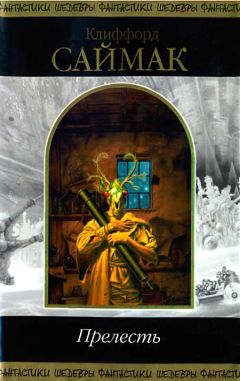43, 233; E. Lohr ‘The Russian Army and the Jews: Mass Deportations, Hostages, and Violence during World War P, Russian
Review, 60 (2001), p. 408 on the Pale.
85. Altshuler, Soviet Jewry, p. 146.
86. Levin, Paradox of Survival, pp. 275–6.
87. Altshuler, Soviet Jewry, p. 26.
88. C. Abramsky ‘The Biro-Bidzhan Project, 1927–1959’, in Kochan, Jews in Soviet Russia, pp. 70–71, 73–7.
89. B.-C. Pinchuk Shtetl Jews under Soviet Rule: Eastern Poland on the Eve of the Holocaust (London, 1990), pp. 55, 129–31.
90. Pinchuk, Shtetl Jews, p. 39.
91. Schechtman, ‘The USSR, Zionism and Israel’, p. 124.
92. S. Sebag Montefi ore Stalin: the Court of the Red Tsar (London, 2003), pp. 509–10; A. Vaksberg Stalin against the Jews (New York, 1994), pp. 159–81; Levin, Paradox of Survival, pp. 393–4.
93. For details see B. Pinkus The Jews of the Soviet Union: the History of a National Minority (Cambridge, 1993), pp. 142–50, 174–7; Y. Rapaport The Doctors’ Plot: Stalin’s Last Crime (London, 1991); J. Brent and V. Naumov Stalin’s Last Crime: the Plot against the Jewish Doctors, 1948–1953 (London, 2002).
94. A. Blakely Russia and the Negro (Washington DC, 1986), p. 101.
95. Hirsch, ‘Race without Racial Polities’, pp. 32–5; A. Weiner ‘Nothing but Certainty’, Slavic Review, 61 (2002), pp. 44–51. See for a different view E. D. Weitz ‘Racial Politics without the Concept of Race: Reevaluating Soviet Ethnic and National Purges’, Slavic Review, 61 (2002), pp. 1–29.
96. Hirsch, ‘Race without Racial Polities’, p. 36.
97. Akten zur deutschen auswärtigen Politik, Ser. D, vol. I (Baden-Baden, 1950), p. 25, ‘Niederschrift über die Besprechung in der Reichskanzlei’, 5 November 1937.
98. S. Lauryssens The Man who Invented the Third Reich (Stroud, 1999), pp. 140, 146, 151.
99. J. W. Young Totalitarian Language: Orwell’s Newspeak and its Nazi and Communist Antecedents (Charlottesville, Va., 1991), p. 108.
100. M. Quinn The Swastika: Constructing the Symbol (London, 1994), pp. 21, 116, 130–33.
101. Feinstein, ‘Deutschland über alles?’, pp. 506–9; J. W. Baird To Die for Germany: Heroes in the Nazi Pantheon (Bloomington, Ind., 1990), pp. 79–80, 264–5.
102. A. Kruck Geschichte des Alldeutschen Verbandes 1890–1939 (Wiesbaden, 1954), p. 216.
103. R.J. O’Neill The German Army and the Nazi Party 1933–1939 (London, 1966), p. 87.
104. Royal Institute of International Affairs, Nationalism, p. 78.
105. J. A. Leopold Alfred Hugenberg: The Radical Nationalist Campaign against the Weimar Republic (New Haven, Conn., 1977), pp. 149–63.
106. Kruck, Geschichte des Alldeutschen Verbandes, pp. 216–17.
107. Herb, Under the Map of Germany’, pp. 132–40.
108. F. L. Kroll Utopie als Ideologie: Geschichtsdenken und politisches Handeln im Dritten Reich (Paderborn, 1998), pp. 217–2.0; see too A. A. Kallis ‘To Expand or not to Expand? Territory, Generic Fascism and the Quest for an “Ideal Fatherland’”, Journal of Contemporary History, 38 (2003), pp. 237–60; J. Hermand Der alte Traum vom neuen Reich: Völkische Utopien und Nationalsozialismus (Frankfurt am Main, 1988), pp. 321–33.
109. F. El-Tayeb ‘“Blood is a very special Juice”: Racialized Bodies and Citizenship in Twentieth-Century Germany’, International Review of Social History, 44 (1999), Supplement, pp. 149–53, 162.
110. E. Syring Hitler: seine politische Utopie (Frankfurt am Main, 1994), p. 210.
111. Vopel, ‘Radikaler, völkischer Nationalismus’, p. 164.
112. M. Dean The Development and Implementation of Nazi Denaturalization and Confi scation Policy up to the Eleventh Decree of the Reich Citizenship Law’, Holocaust and Genocide Studies, 16 (2002), pp. 218–20.
113. H. Kaden and L. Nestler (eds) Dokumente des Verbrechens: aus Akten des Dritten Reiches 1933–1945 (3 vols., Berlin, 1993), vol. i, pp. 60–62, Reichsbürgergesetz, 15 September 1935; Gesetz zum Schütze des deutschen Blutes und der deutschen Ehre, 15 September 1935.
114. P. Weindling Health, Race and German Politics between National Unifi cation and Nazism 1870–1945 (Cambridge, 1989), p. 530; C. Lusane Hitler’s Black Victims (New York, 2002).
115. Dokumente des Verbrechens, vol. i, pp. 66–7, Erste Verordnung zum Reichsbürgergesetz, 14 November 1935.
116. B. Miller-Lane (ed.) Nazi Ideology before 1933: A Documentation (Manchester, 1978), p. 115 from ‘Marriage Laws and the Principles of Breeding’; Heinemann, “Rasse, Siedlung, pp. 62–6; D. Bergen The Nazi Concept of “Volksdeutsche” and the Exacerbation of Anti-Semitism in Eastern Europe 1939–1945’, Journal of Contemporary History, 29 (1994), pp. 569–72 for details of the ‘Volksliste’.
117. Heinemann, ‘Rasse, Siedlung’, pp. 190–95.
118. Heinemann, ‘Rasse, Siedlung’, pp. 64–5; on the fi gures for those recorded, pp. 600–602.
119. Connelly, ‘Nazis and Slavs’, pp. 18–19; see too G. Bock ‘Gleichheit und Differenz in der nationalsozialistischen Rassenpolitik’, Geschichte und Gesellschaft, 19 (1993), pp. 277–310.
120. R. Lukes The Forgotten Holocaust: the Poles under German Occupation 1939–1944 (Lexington, Kty, 1986), p. 8; see too J. T. Gross Polish Society under German Occupation: the Generalgouvernement, 1939–1944 (Princeton, NJ., 1979), pp. 195–8 on German nationality policy.
121. Connelly, ‘Nazis and Slavs’, p. 10.
122. Lukes, Forgotten Holocaust, p. 8; G. Aly ‘Final Solution’: Nazi Population Policy and the Murder of the European Jews (London, 1999), pp. 108–13; Kroll, Utopie, p. 220. See too W. Pyta ‘“Menschenökonomie”: Das Ineinandergreifen von ländlicher Sozialraumgestaltung und rassenbiologischer Bevölkerungspolitik im nationalsozialistischen Staat’, Historisches Zeitschrift, 273 (2001), pp. 31–94.
123. G. Lewy The Nazi Persecution of the Gypsies (Oxford, 2000), pp. 43–5, 47.
124. Lewy, Persecution of the Gypsies, pp. 52–3; E. Thurner National Socialism and Gypsies in Austria (Tuscaloosa, Ala., 1998), pp. 11–12.
125. Thurner, Gypsies in Austria, pp. 38–9.
126. Lewy, Persecution of the Gypsies, pp. 66–9.
127. G. Lewy ‘Gypsies and Jews under the Nazis’, Holocaust and Genocide Studies, 13 (1999), pp. 385–7.
128. Lewy, ‘Gypsies and Jews’, pp. 388–93.
129. B. D. Lutz and J. M. Lutz ‘Gypsies as victims of the Holocaust’, Holocaust and Genocide Studies, 9 (1995), p. 356.
130. Lewy, Persecution of the Gypsies, p. 43.
131. A. Elon The Pity of it All: a Portrait of Jews in Germany 1743–1933 (London, 2002), pp. 210, 378; O. Heilbronner ‘From Antisemitic Peripheries to Antisemitic Centres: The Place of Antisemitism in Modern German History’, Journal of Contemporary History, 35 (2000), pp. 560–75.
132. Elon, Pity of it All, p. 379; F. Nicosia The Third Reich and the Palestine Question (London, 1985), p. 212 for fi gures from 1932 onwards.
133. S. Haffner Defying Hitler: a memoir (London, 2002), pp. 121–2.
134. Bundesarchiv, Berlin R2501/6601, Reichsbank research department, ‘Bedenkliche wirtschaftliche Auswirkungen des Judenboykotts’, appendix, pp. 1–5.
135. V. Klemperer I Shall Bear Witness: the Diaries of Viktor Klemperer 1933–41 (London, 1998), p. 13.
136. S. Friedländer Nazi Germany and the Jews: the Years of Persecution 1933–1939 (London, 1997), pp. 27–9.
137. Friedländer, Nazi Germany and the Jews, p. 28; see too C. Koonz The Nazi Conscience (Cambridge, Mass., 2003), pp. 166–7.
138. H. Michaelis and E. Schraepler (eds) Ursachen und Folgen vom deutschen Zusammenbruch 1918 bis 1945 (Berlin, 1968), vol. xi, p. 605, Himler decree, 3 December 1938.
139. W. Benz (ed.) Die Juden in Deutschland 1933–1945: Leben unter nationalsozialistischer Herrschaft (Munich, 1988), p. 783.
140. Friedländer, Nazi Germany and the Jews, pp. 62–3; Nicosia, Third Reich and Palestine, pp. 41–9, 212; Benz, Juden in Deutschland, pp. 733, 738. Benz gives a fi gure of 168, 972 for May 1941 and 163, 696 for October that year.
141. Friedländer, Nazi Germany and the Jews, p. 177.
142. Friedländer, Nazi Germany and the Jews, pp. 242–6; B. F. Pauley Prom-Prejudice to Persecution: a History of Austrian Anti-Semitism (Chapel Hill, NC, 1992), pp. 284–97.
143. H. Mommsen Von Weimar nach Auschwitz. Zur Geschichte Deutschlands in der Weltkriegsepoche (Stuttgart, 1999), pp. 268–82.
144. Connelly, ‘Nazis and Slavs’, p. 33.
145. Maser, Hitler’s Letters and Notes, pp. 279–83; see too K.-U. Merz Das Schreckbild: Deutschland und der Bolschewismus 1917 bis 1921 (Frankfurt am Main, 1995), pp. 457–71 for Hitler’s view of the Jews in the early 1920s.
146. W. Treue ‘Hitlers Denkschrift zum Vier jahresplan 1936’, Vierteljahrshefte für Zeitgeschichte, 3 (1955) pp. 204–5.
147. National Archives II (College Park, MD) RG 238, Jackson papers, Box 3, translation of letter from Robert Ley to Dr Pfl ücker, 24 October 1945.
148. Friedländer, Nazi Germany and the Jews, pp. 3, 12.
149. National Archives, RG 238, Jackson papers, Box 3, Robert Ley to Dr Pfl ücker.
150. Hitler’s speech in M. Domarus Hitler’s Speeches and Proclamations 1939–1940 (Würzburg, 1997), pp. 1448–9, Hitler’s speech to the Reichstag, 30 January 1939; Himmler in Kroll, Utopie, pp. 213–16.
151. P. Longerich The Unwritten Order: Hitler’s Role in the Final Solution (Stroud, 2001), pp. 51–3.
152. Longerich, Unwritten Order, pp. 63–5; see the discussion of recent debates in M. Roseman ‘Recent Writing on the Holocaust’, Journal of Contemporary History, 36 (2001), pp. 361–72.
153. R. Breitman ‘Himmler and the “Terrible Secret” among the executioners’, Journal of Contemporary History, 26 (1991), pp. 436–7.
154. See for example W. Benz, K. Kwiet and J. Matthäus Einsatz im ‘Reichskommissariat Ostland’: Dokumente zum Völkermord im Baltikum und in Weissrussland 1941–1944 (Berlin, 1998) for a detailed documentation of the process of ghettoization and mass shootings. See too Aly, ‘Final Solution’, chs 3, 7 and 8 on ghettos and deportation.
155. T. Jersak ‘Die Interaktion von Kriegsverlauf und Judenvernichtung: ein Blick auf Hitlers Strategie im Spätsommer 1941’, Historisches Zeitschrift, 268 (1999), pp. 345–60.
156. P. Witt ‘Two Decisions Concerning the “Final Solution to the Jewish Question”: Deportation to Lodz and Mass Murder in Chelmno’, Holocaust and Genocide Studies, 9 (1995), p. 319; C. Gerlach ‘The Wannsee Conference, the Fate of the German Jews, and Hitler’s Decision in Principle to Exterminate All European Jews’, Journal of Modern History, 70 (1998), pp. 762–8.
157. Gerlach ‘Wannsee Conference’, pp. 784–5.
158. Gerlach, ‘Wannsee Conference’, pp. 807–8; for other views on the signifi cance of the meeting on 12 December see M. Moll ‘Steuerungsinstrument im “Ämterchaos”? Die Tagungen der Reichs-und Gauleiter der NSDAP’, Vierteljahrshefte für Zeitgeschichte, 49 (2001), pp. 240–43; see too U. Herbert (ed.) National Socialist Extermination Policies: Contemporary German Perspectives and Controversies (Oxford, 2000), pp. 38–41.




